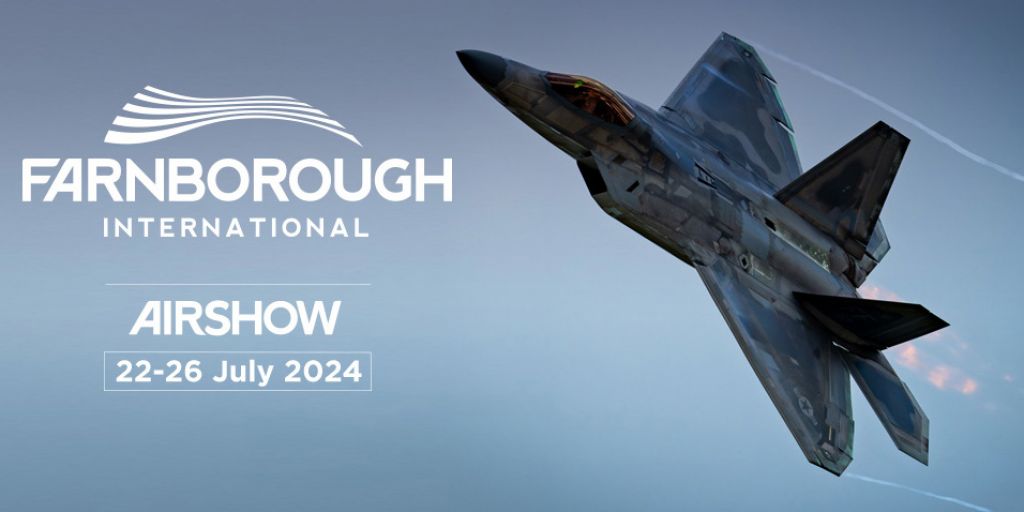The Aerospace & Defense team of MCF Corporate Finance, Christoph Stoecker, Ish Alg and Leon Körwer visited the Farnborough International Airshow together with the A&D team of its sister company from the US D.A.Davidson, Paul Weisbrich and Toby Albright. Over 3.5 days we had over 40 meetings with executives of A&D companies.
The general sentiment at the Show was carried by increased awareness that the geopolitical conflicts in the Ukraine and the Middle East have already led to a change of mind of governments, in particular of European countries, in their defence spending and rearmament. European countries, having abolished military service in the late nineties and early two thousands after the fall of the Berlin Wall and Russian Glasnost / Perestroika, have already or are discussing to re-introduce conscription and national service, amongst others Germany, Italy, France, Sweden, Norway and Latvia while countries like the UK, Spain, Switzerland and Poland have always retained their professional armies without conscription but are increasing the number of personnel in their respective forces. Increased and further increasing defence budgets and spending with corresponding increased order volumes are putting a strain on production capacities and delivery times.
These are our Key Take-Aways:
1. Orders Civil aviation:
Orders were down by around 50% compared to Le Bourget 2023 to 467 aircrafts: Narrowbody orders 295 versus 1,101, widebody orders 161 versus 158, regional aircrafts 11 versus 17. Airbus has taken the vast majority of firm orders, options, LOIs and MOUs. All these orders will increase the already existent delivery backlog and supply chain issues.
2. Ammunition:
Stocks are depleted due to the support of Ukraine. These need to be replenished and production capacities are being ramped up. Delivery times will be longer than demanded by the military. Rheinmetall has had a vast order intake over the last months and is building a new factory. On a side note: Pre-Ukraine, Germany would have had ammunition to defend itself for 1.5 days. Now orders have been placed to increase this level and previously shut down military depots are being reactivated.
3. Supply chain:
Due to the COVID related slow-down in production, the supply chain continues to be problematic. On the one hand, there is a delivery back-log due to shortage in or slow delivery of components and raw materials while OEMs are expecting deliveries. On the other hand new orders are being placed with suppliers that are still being confronted with the same supply chain problems. OEMs as well as suppliers are considering entering into partnerships with or even taking a stake in their suppliers in order to secure their own supply chain.
4. Order books and backlog:
Despite issues in the supply chain and the increased demand for defence products, the order intake for defence related products and components does not reflect the demand. Governments are slow to allocate funds to the defence budget as the economic downturn raises demands in other areas. Further, decisions regarding new weapons systems are delayed (for example development of the 6th generation fighter jets) as the both the Ukraine war as well as the Gaza conflict are producing new insights into the demands of modern warfare. Suppliers are seeing a reduction of their order book/pipeline and new projects remain uncertain, in particular in the defence space. Other suppliers, in particular for products needed in civil aviation, are reporting a good position when negotiating prices for new deliveries to OEMs. Both OEMs as well as suppliers in the defence industry are demanding long term certainty and orders well into the future in order to justify investments into their production capacity.
5. Space:
OEMs as well as suppliers are increasingly interested in investing in and developing technology relevant in space. The military are seeing space as strategically important, and governments seem to be supporting this in light of the latest geopolitical conflicts.
Overall, the attendance at Farnborough was lower than in past years despite the show being booked out with over 1,200 exhibitors. The displays at the show were concentrated on military aircraft both fixed wing as well as rotor. The flying displays and live performances were likewise focussed on the Air Forces and included, amongst others, F15 e Strike Eagle, F16, F35A Lightning and B52 fighter jets as well as Chinook and Gökbey helicopters, all engaging in impressive manoeuvres. Flying displays of civil aircrafts included an Embraer E195 and Airbus A321 253 XLR caught the attention of visitors.
Bookings for Le Bourget next year are already at an extremely high level, and it is expected that the number of visitors will be higher than in previous years and to reach pre-Covid levels.
Related Aerospace & Defence content:
You can find our latest Aerospace and Defence report here.
Get in touch
For more information or to discuss how we can help your company with Aerospace and Defense M&A please get in touch.
Get in touch




